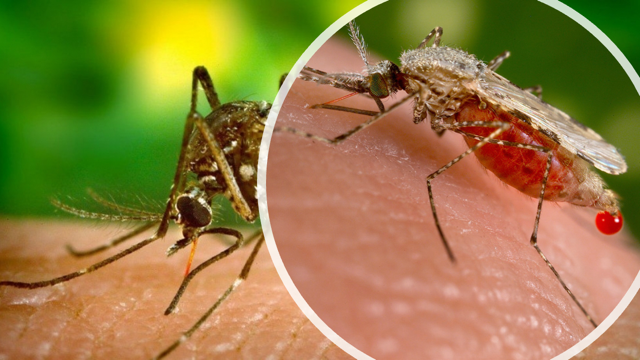In 2020, malaria was estimated to have cost the lives of half a million people in Africa, majority of whom are children under five years of age. Malaria is caused by the parasite, plasmodium. Four of the species of plasmodium that are traditionally infectious for humans are Plasmodium falciparum, P. vivax, P. malariae, and P. ovale, and of these, P. falciparum is the deadliest.
There are about 3,500 species of mosquitoes of which 837 are endemic in Africa. Of these huge species of mosquitoes, only species belonging to the genus Anopheles transmit the malaria parasitic plasmodium. The anopheline species predominant in Africa are the Anopheles gambiae, A. coluzzi and A. arabiensis. Another anopheline species called A. stephensi, is mainly found in Southern Asia. But about a decade ago, it emigrated to the Republic of Djibouti, and since then has spread to other sub-Saharan African countries, including Nigeria (specifically, in the North).
This JJC (Johnny-just-come) has a different habit from the other local anopheline species. For example, A. stephensi is a city slicker and because it lays its eggs in artificial body of water like cisterns, wells, and drums or barrels of stored clean drinking water, it is able to reproduce during the dry season when the other native mosquitoes are unable to do so due to dried up gutters and ponds where they normally lay their eggs.
Even more worrying is the fact that unlike the native anopheline mosquitoes, the larvae of the invading A. stephensi are able to withstand the harsh dry season conditions and survive into adulthood. This is in stark contrast with their native counterparts, which die off in the absence of proper breeding sites.
More bad habits still, the A. stephensi is resistant to most insecticides, including bed nets treated with insecticides that ordinarily would kill other native anopheline mosquitoes. The little monsters prefer to live in animal shelters, including cattle sheds, than in homes, thus making it harder to target them with treatment regimens applied to other native anopheline communities, for example, indoor spraying of insecticides.
Not only does this illegal immigrant has bad habits, it does also have strange feeding habits. It feeds off the blood of both humans and animals, and takes chunks off you both indoors and outdoors. And while it feeds off your blood, it can transmit two different malaria parasites, Plasmodium falciparum and P. vivax into your bloodstream! The former causes severe and often potentially fatal malaria due to its ability to destabilise and weaken the physiology of the host, while the later causes the mild form of the disease.
How then did the A. stephensi get to Africa? The Djibouti port lies at an important crossroads of international trade between countries in Africa, Asia and the Middle East. The theory is that the A. stephensi mosquitoes are illegal immigrants who travelled as stowaways in shipping containers arriving from Southern Asia to Djibouti – makes one appreciate the plight and desperation of economic human migrants travelling to Europe in rickety boats!
Malaria incidence is normally directly proportional to favourable mosquito breeding season, which is traditionally during the rainy season. This means that the incidence of malaria outbreak is higher during the rainy season than during the dry season. But ever since the arrival of A. stephensi mosquitoes in Africa, the incidence of malaria has gone up alarmingly. For example, Djibouti in 2012 had less than 30 cases of confirmed malaria, but since the arrival of A. stephensi in that year, the number of confirmed malaria cases has drastically risen to over 73,000 as at 2020!
A similar trend is observed in Dire Dawa, Ethiopia, where in 2019 before the arrival of A. stephensi, there were only 205 cases of confirmed malaria infection. That figure has this year jumped almost 12 times to 2,400! In other words, A. stephensi mosquitoes are filling in the void created by the native anophelines who normally breed during the rainy season by laying eggs in puddles and other stagnant body of water.
And suspicion is growing that the little monsters might have travelled the same way, hiding in shipping containers, to other African countries. If this is the case, it is about time that Asia started issuing out passports to Anopheles stephensi mosquitoes, and also about time African countries started arresting the little invasive tearaways and charging them to court for antisocial behaviour!
In the mean time, taking care to properly close storage water containers to deny the invasive anopheline mosquitoes a breeding ground, is highly advisable. Also the use of genetically engineered mosquitoes (as reported here in our 22 May 2022 edition: “Male Mosquitoes Engineered to Kill Female Offspring”), should be considered as part of the strategies to controlling the population of A. stephensi.
In a related development, a monoclonal antibody against malaria, reported here last year (see our September 2021 edition), has shown promise in an expanded field trial. It was able to protect recipients from malaria by up to six months after just a single dose.
Monoclonal antibodies are special antibodies made from unique white blood cells or proteins, and are often specifically designed for only one target. Once a promising candidate is identified and modified with respect to improved effectiveness, a clonal cell line is then developed to recreate many copies of the molecule. In effect, the antibodies are just laboratory clones of a specific natural antibody, hence the name, monoclonal.
For the origin of the monoclonal antibody and how it was made, kindly see our 5 September 2021 publication entitled, “New Toolkits For Prevention of Malaria”. In brief, the natural antibody named CIS43LS, was isolated from the blood of a participant in a clinical trial for an experimental malaria vaccine, and was mass-produced in the ovary of a Chinese hamster. The antibody specifically binds to a protein found on the surface of sporozoites and prevents them from invading cells of the liver.
Sporozoite, if you remember your secondary school biology, is one of the reproductive stages of the malaria parasite, which is found in the mosquito salivary glands. During a blood meal, the malaria parasite-infected mosquito injects the sporozoite into the bloodstream. This then travels through the blood to infect the cells of the liver. The monoclonal antibody acts by destroying the sporozoite through binding to an important protein found on its surface called circumsporozoite. This protein is required for sporozoite development in the mosquito and as well as sporozoite adhesion to target cells in the host. Thus, by binding onto the circumsporozoite, the monoclonal antibody prevents the invasion of liver cells by the parasite.
Earlier clinical trial of the monoclonal antibody using only 9 human subjects intentionally exposed to bites from malarial parasite-infected mosquitoes, showed that all the participants were immune to malaria for between 6 and 9 months after intravenous delivery of the vaccine.
A large scale clinical trial of the antibody was done in Mali, involving 330 participants. The participants received intravenous low or high dose of the antibody. The control groups received only a placebo (dummy antibody). The volunteers were exposed to mosquito bites and their blood samples checked for the presence of the malaria parasite, Plasmodium falciparum, every fortnight.
The data showed that the monoclonals were effective in preventing malaria infection by 77% in the high-dose group and were 54% effective in the low-dose group when compared with the placebo group.
The data looked promising but there are room for improvement. For example, the researchers measured infection rates as against clinical illness. The difference is that in nature, not everybody infected with malaria parasite becomes ill, therefore, measuring only infection rates instead of clinical illness would not give a true picture of the effectiveness of the monoclonals.
Another drawback to the use of the monoclonal antibody is the delivery route, which is by intravenous infusion. This method of drug delivery is cumbersome and may not be suitable in certain settings, especially in rural areas or when treating children. But the biggest obstacle to the use of the monoclonal antibody is the cost. Monoclonal antibodies due to the challenging nature of their production and administration, are not very cost effective. However, it is envisaged that with mass production coupled with subsidies, the cost might be reduced to an affordable level.





![Relishing Ugba [Oil Bean] Delicacy](https://www.primebusiness.africa/wp-content/uploads/2025/06/Ugba-delicacy-720x480.jpg)












Follow Us